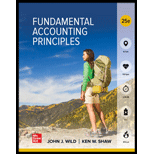
1.
A cost-of-quality (COQ) depicts quality-related costs that a firm incurs during a reporting period. These costs are bifurcated into four categories including prevention costs, appraisal costs, internal failure costs, and external failure costs.
:
The total cost of quality for last year and this year.
2.
A cost-of-quality (COQ) report depicts quality-related costs that a firm incurs during a reporting period, that can help management as well as users to determine total spending on quality, identify the areas that need attention, and improvement, and overtime recognizes the effects of their actions on both total quality costs and the components of overall quality costs.
:
Cost of each category as a percent of the total cost of quality of last year.
3.
A cost-of-quality (COQ) report depicts quality-related costs that a firm incurs during a reporting period, that can help management as well as users to determine total spending on quality, identify the areas that need attention, and improvement, and overtime recognizes the effects of their actions on both total quality costs and the components of overall quality costs.
:
Cost of each category as a percent of the total cost of quality of last year.
4.
A COQ report can help management as well as users to determine total spending on quality, identify the areas that need attention, and improvement, and over time recognizes the effects of their actions on both total quality costs and the components of overall quality costs.
:
Want to see the full answer?
Check out a sample textbook solution
Chapter 4 Solutions
FUND.ACCT.PRIN.(LOOSELEAF)
 College Accounting (Book Only): A Career ApproachAccountingISBN:9781337280570Author:Scott, Cathy J.Publisher:South-Western College Pub
College Accounting (Book Only): A Career ApproachAccountingISBN:9781337280570Author:Scott, Cathy J.Publisher:South-Western College Pub College Accounting (Book Only): A Career ApproachAccountingISBN:9781305084087Author:Cathy J. ScottPublisher:Cengage Learning
College Accounting (Book Only): A Career ApproachAccountingISBN:9781305084087Author:Cathy J. ScottPublisher:Cengage Learning College Accounting, Chapters 1-27AccountingISBN:9781337794756Author:HEINTZ, James A.Publisher:Cengage Learning,
College Accounting, Chapters 1-27AccountingISBN:9781337794756Author:HEINTZ, James A.Publisher:Cengage Learning,- Principles of Accounting Volume 1AccountingISBN:9781947172685Author:OpenStaxPublisher:OpenStax College
 Intermediate Accounting: Reporting And AnalysisAccountingISBN:9781337788281Author:James M. Wahlen, Jefferson P. Jones, Donald PagachPublisher:Cengage Learning
Intermediate Accounting: Reporting And AnalysisAccountingISBN:9781337788281Author:James M. Wahlen, Jefferson P. Jones, Donald PagachPublisher:Cengage Learning




